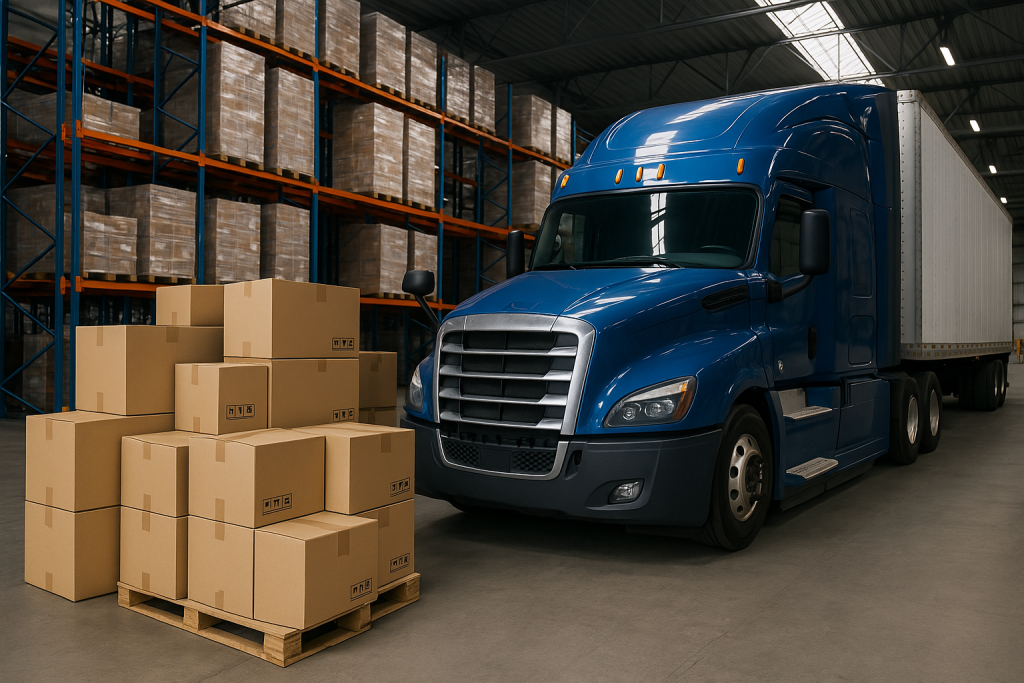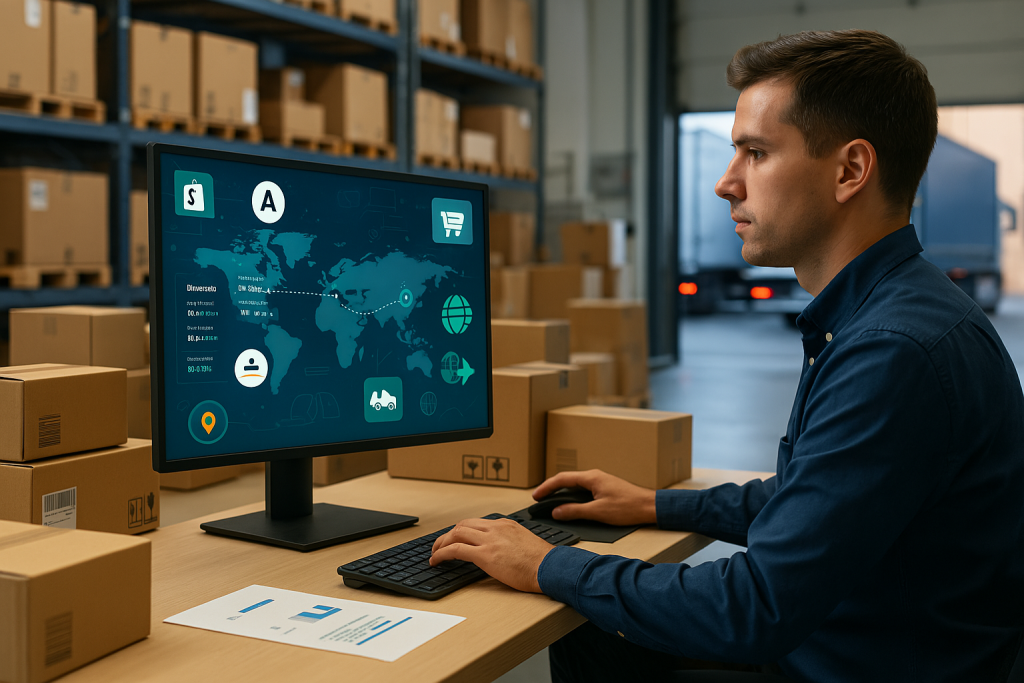Freight Forwarding in the E-Commerce Boom: Tips for Success
With high-volume orders, tighter delivery expectations, and constantly changing SKUs, freight forwarding has become a critical backbone of online commerce. To stay competitive, forwarders must adapt quickly, embrace digital tools, and deliver speed, accuracy, and transparency.

🚀 Why E-Commerce Is Changing Freight Forwarding
Traditional freight workflows weren’t built for:
- 🌐 High shipment frequency
- 📦 Smaller, fragmented cargo loads
- 🛒 Fast-changing inventory and destinations
- ⏱ Same-day/next-day delivery pressure
E-commerce introduces B2C speed and complexity into a traditionally B2B world. Forwarders who don’t adapt risk delays, errors, and unhappy clients.

🔧 Tips to Master E-Commerce Freight Forwarding
✅ 1. Automate Repetitive Tasks
Processing hundreds of shipments manually? Not sustainable. Use automation to:
- Generate shipping documents instantly
- Auto-assign carriers by region, weight, or delivery time
- Streamline customer notifications
💡 Freight software like Linbis helps automate workflows and scale faster with less human error.
✅ 2. Leverage Multi-Carrier Logistics
No single carrier can handle all e-commerce needs. Use multiple carriers across:
- Express and standard delivery
- Domestic and cross-border
- Specialized routes or services
🔀 Smart routing improves delivery times and reduces failed shipments.
✅ 3. Offer Real-Time Tracking
Customers want to see their order in motion. With the right tools, you can:
- Embed tracking pages
- Send milestone alerts (in transit, out for delivery, etc.)
- Reduce support calls and improve trust
📍 Visibility builds loyalty.
✅ 4. Integrate with E-Commerce Platforms
Connect your freight system to Shopify, WooCommerce, Amazon, etc. Benefits include:
- Faster order syncing
- Automated label generation
- Centralized shipping visibility
🔗 Eliminate copy-paste chaos.
✅ 5. Prepare for Returns Logistics
E-commerce = higher return rates. Prepare your reverse logistics by:
- Pre-approving return labels
- Assigning return centers per region
- Automating credit/refund triggers
🔁 A smooth return experience boosts brand reputation.
🧠 Bonus: How Linbis Supports E-Commerce Freight Forwarders
Linbis freight forwarding software offers:
- Scalable shipment automation
- Real-time tracking & notifications
- Multi-carrier management
- Integration with popular e-commerce stores
- Cloud-based access to manage from anywhere
📦 Whether you handle 50 or 5,000 orders a day, Linbis helps you stay organized, efficient, and responsive in a fast-paced market.

📈 Conclusion: Adapt and Thrive in the E-Commerce Era
The e-commerce boom isn’t slowing down — and neither should you. Freight forwarders who embrace automation, real-time visibility, and platform integrations are best positioned to grow alongside global online retail.
Success in this space is about speed, scale, and smart systems.
Now’s the time to rethink your freight processes — and gear up for a digital-first logistics future.
